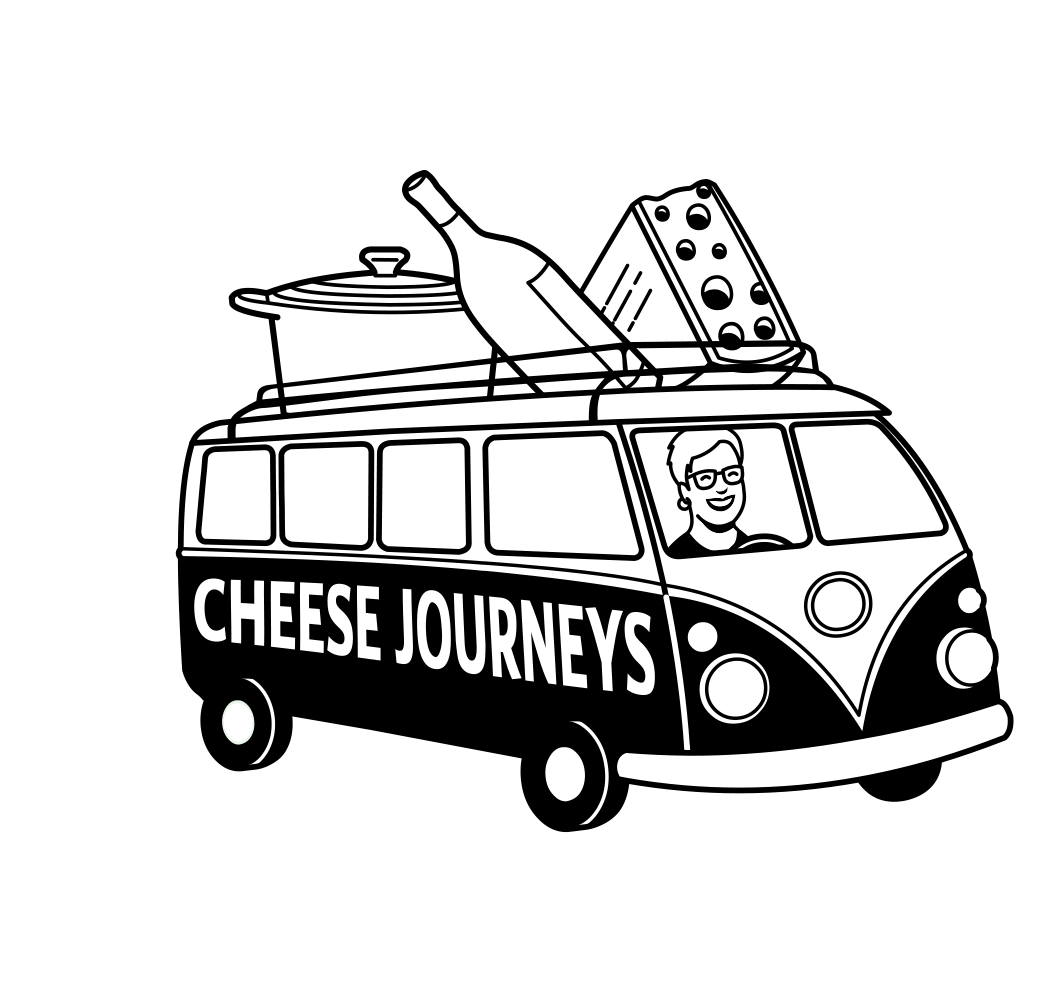When Camilla, of CheeseTalks and Cheese Journeys co-host, spends the family vacation away from home, her husband and kids know by now that there is always a cheese story to explore – just around the corner. Following is one of her recent cheese adventures.
My husband and I were on a long weekend getaway in Andalusia, Spain’s southernmost region. We were driving around in the mountains when he suddenly stopped the car and pointed at a sign. It was a little rusty, but the words were clear: Four kilometers (2.5 miles) away was the dairy farm Quesería Cortijo Júrtiga. Of course, we had to check it out, and so down the dirt road we went.
Photo credit: Camilla Bojsen-Møller
Cool mountain air and silence met us when we stopped. A dog was barking somewhere, and the of a running motor could be heard in the distance. Among several buildings, we eventually spotted the door to the cheese shop.
Photo credit: Camilla Bojsen-Møller
Welcome
Julia opened the door and invited us into the small shop, where she told us about the family farm and how they make their small-batch goat cheeses using unpasteurized milk from their own goats. They produce the Spanish fresh cheese Requesón, a ricotta-style cheese, as well as Alhama de Granada, a semi-hard, pressed cheese named after its area of production in the province of Granada. These small, cylindrical wheels weigh 1 – 2 kg and mature for 60-90- days, covered with black pepper, paprika, thyme, rosemary or in olive oil.
The interior is of Alhama is an off-white color with a few small holes appearing throughout. Alhama has classical notes of chèvre, and once the cheese has melted in your mouth you are left with a tangy aftertaste.
Photo credit: Camilla Bojsen-Møller
As we tasted lovely samples offered to us, Julia explained that the farm has been in the family for many years and they always had a few goats, producing cheese for their own consumption. Six or seven years ago, though, they started to make cheese to sell and production has grown year by year. While Julia is the “chief cheese,” responsible for converting the milk to cheese every day, beginning at 7 am in the small dairy, her two brothers, Antonio and José Luis, sow the cereal that feeds their herd and also look after the animals.
Photo credit: Camilla Bojsen-Møller
Goat cycle
Today the family continues to follow the long, familiar tradition of agriculture, breeding 1,400 goats of the local breed Granadino-Murciano, renowned for its milk. Each goat gives about 1/2 gallon of milk per milking for 5-6 months a year, for a total of 130-160 gallons. In order to have milk all year round, they make sure the cycles are consecutive.
Every single day the brothers shepherd the goats out to feed among oak and olive trees. In the late afternoon they head home for the second milking. Although the cheeses aren’t officially “organic,” all of the Quesería Cortijo Júrtiga cheeses are handmade, assuring an all-natural make-process that has been tradition in the southern part of Spain for centuries.
Photo credit: Camilla Bojsen-Møller
Of course, we bought several cheeses and savored the combination of the fresh acidic goat cheese and warm pepper – a delightful combination.
For more information about Quesería Cortijo Júrtiga, click here.
Camilla Bojsen-Møller works as a cheese communicator in Denmark. She has blogged about cheese (in Danish) since 2012. Follow her cheese universe (in English) on her blog www.cheesetalks.com as well as Instagram and Facebook.






